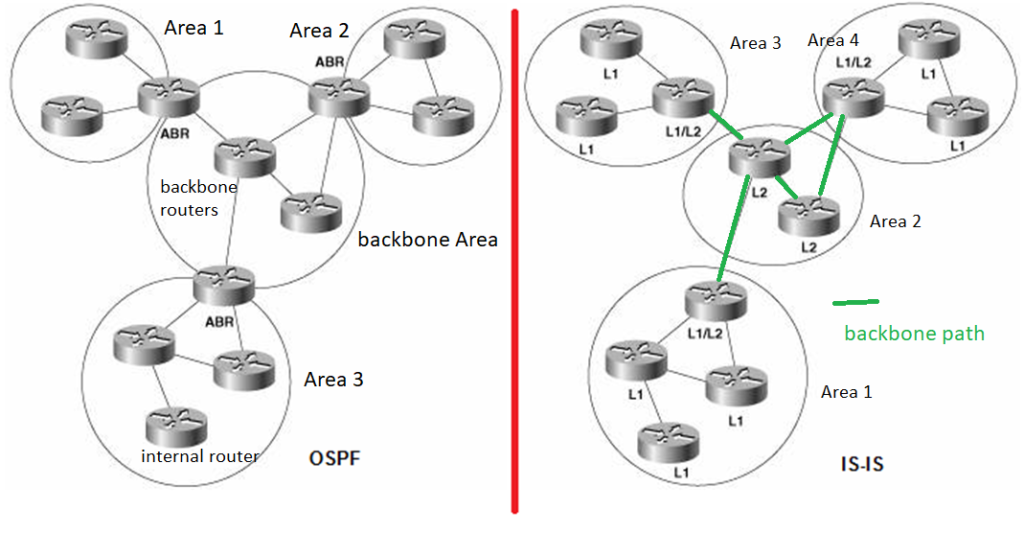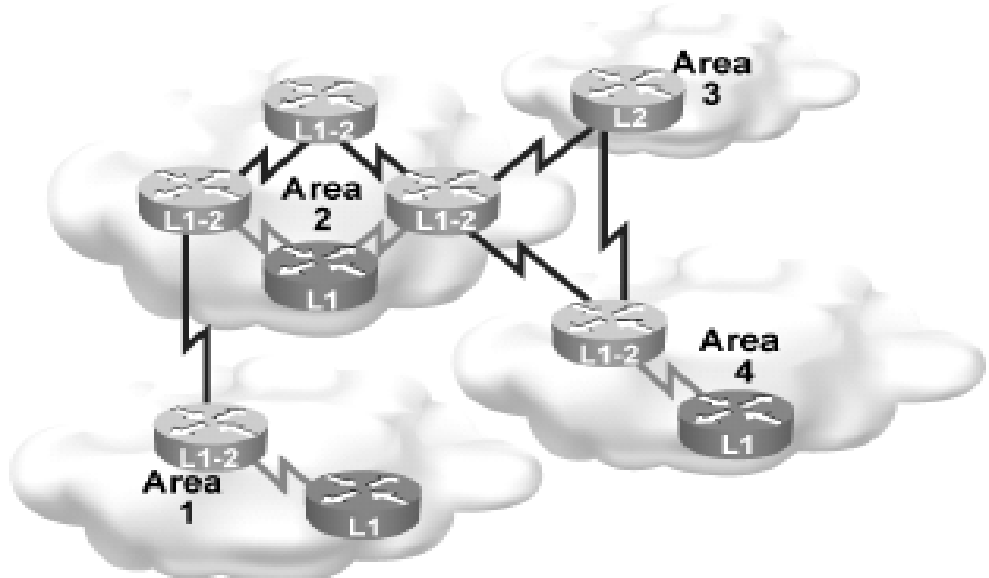ISIS Area Design and how it differs from OSPF is the topic of this section. And we will answer this question why area design is important.
ISIS Area Design Fundamental
The Area structure in ISIS has similarities and differences with OSPF. Both follow somehow a hierarchical structure.
In OSPF, each normal area is connected to the backbone area, and the normal areas communicate with each other through the backbone area. But In ISIS, Areas must be connected to each other through a backbone path.
In OSPF, routers, determine the boundary between areas, but in ISIS, links, determine the boundary between areas.
In OSPF, we call internal routers of normal areas internal routers. In ISIS, we call internal routers of areas L1 or Level1 routers.
In OSPF we call the routers of the backbone area, backbone routers. But in ISIS, we call the routers existing in the backbone path, L2 or Level2 routers.
In OSPF, ABR router is the border of the normal areas with the backbone area. In ISIS, we call the routers that are connected to L1 (Level1) routers from one side and to the backbone path or L2 (Level2) routers from the other side, L1/L2 (Level1/Level2) routers.
These two figures show the differences in the structure of Area in OSPF and ISIS.
The figure clearly shows that in ISIS, L2 routers form the backbone path and all areas are connected to each other through the backbone path. You can also see that the border between areas in ISIS is a link, not a router. In ISIS, each router is located in exactly one area, unlike OSPF, where border routers are located in several areas at the same time.
ISIS Area Design Advantages
Surely this question will arise for you, does the structure of Area in ISIS also create an advantage? The answer to this question is certainly positive.
In ISIS, it is not only much easier to expand the Area, but it is also possible to directly communicate between the Areas through the backbone path.
In ISIS, if there is direct link between two areas, by adding routers at both ends of the link to the backbone path, it will be possible to send traffic on the link and directly between areas.
In this way, in ISIS, traffic is forwarded in a more optimal way in the network infrastructure, and this is one of the basic requirement of all service providers, and it is one of the important reasons why service providers prefer to use ISIS instead of OSPF.
In OSPF, if there is a direct link between two normal areas, it is not easy to forward the traffic between the two areas through that link, and special measures such as virtual link should be used to move the traffic directly between normal areas.
The following figure shows an example of the structure of Area in ISIS, where we have a direct connection between Area 3 and Area 4. For direct communication between two areas, it is enough for the routers at both ends of the link to be located in the backbone path.
ISIS Area Design versus OSPF Area Design
| ISIS Area Design | OSPF Area Design |
|
Backbone Area |
Backbone Path |
| Router is the border of Areas (ABR) | Link is the border of Areas |
| easy to externd | difficult to extend |
| direct communication between Areas is easy | direct communication between Areas is difficult |
| L1, L2, L1/L2 Routers | Internal, backbone, ABR routers |
| mostly used in Service providers | mostly used in Enterprises |

